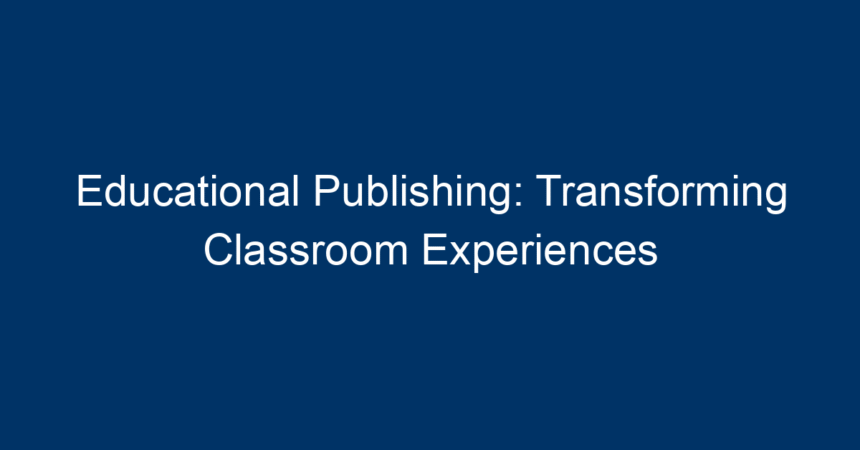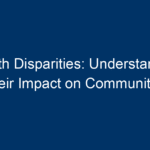In an ever-evolving educational landscape, educational publishing stands at the forefront of innovation, fundamentally altering the way teachers teach and students learn. With the advent of digital technologies and a growing demand for personalized learning experiences, educational publishing is reshaping classroom dynamics and crafting richer, more engaging educational journeys. This article delves into the various facets of educational publishing and its profound impact on modern classrooms.
The Evolution of Educational Publishing
A Brief Historical Perspective
Educational publishing has roots that trace back centuries, from the early printing of textbooks to today’s digital resources. As societies evolved, so did the methods of knowledge dissemination. Initially dominated by physical books, the field has transitioned into a multifaceted realm that encompasses e-books, online courses, and interactive learning environments.
The Shift from Print to Digital
The digital age has revolutionized educational publishing. Teachers and students now have access to a myriad of online platforms that offer unprecedented opportunities for learning. Digital publishers have emerged, providing interactive e-books, courseware, and assessment tools that cater to diverse learning styles. This seismic shift underscores a growing trend toward flexibility and accessibility in education.
The Role of Technology in Educational Publishing
Enhancing Accessibility
One of the most significant advantages of educational publishing in the digital sphere is the enhanced accessibility of resources. Students can access materials from anywhere, breaking the traditional barriers of textbooks confined to the classroom. This transformation is especially beneficial for under-resourced schools and learners, providing them with quality educational materials at little or no cost.
Interactive Learning Experiences
Digital educational materials often integrate interactive elements such as quizzes, simulations, and multimedia content. This interactivity fosters engagement, making learning more enjoyable and effective. Tools like gamification are commonly used in this context, gradually transforming dull content into captivating experiences that motivate students to learn.
Data-Driven Insights
Educational publishing isn’t just about delivering information; it’s also about gathering and analyzing data. Publishers can track user engagement and learning outcomes, enabling educators to adjust their teaching strategies and personalize instruction to meet individual needs. This data-driven approach helps in identifying gaps in knowledge and customizing educational experiences accordingly.
The Impact on Classroom Dynamics
Empowering Teachers
Educational publishing empowers teachers with an array of tools and resources that enhance their instructional capabilities. With access to up-to-date research, lesson plans, and professional development resources, teachers can continuously improve their practice. Additionally, digital publishing allows for easier collaboration among educators, fostering a community of sharing ideas and best practices.
Catering to Diverse Learning Styles
Every student learns differently, and educational publishing embraces this diversity by offering resources that cater to various learning styles—visual, auditory, kinesthetic, and more. Publishers create adaptable content that can be customized to suit the unique needs of each learner, ensuring that every student has an equal opportunity to succeed.
Bridging the Gap between Home and School
Modern educational publishing also plays a crucial role in connecting home and school. Many digital platforms provide resources for parents, enabling them to support their children’s learning at home. This partnership enhances student engagement and accountability, fostering a collaborative approach to education.
Future Trends in Educational Publishing
Personalized Learning Pathways
As the focus on personalized learning intensifies, educational publishing will likely develop even more sophisticated tools that allow for individualized learning pathways. Automated content adjustments, driven by Artificial Intelligence (AI) and Machine Learning (ML), will create tailored educational experiences that adapt to the learner’s pace and preferences.
Blended Learning Environments
The concept of blended learning—combining traditional face-to-face teaching with online resources—is gaining traction. Educational publishing will play a pivotal role in developing resources that support this model, providing both printed and digital materials that promote a seamless learning experience.
Emphasis on Collaboration and Community
A strong trend towards collaboration and community-building is evident in educational publishing. Publishers are creating platforms where educators, learners, and content creators can collaborate, share insights, and develop resources collectively. This collaborative approach enhances the richness of content available to students and educators alike.
Challenges Facing Educational Publishing
Ensuring Quality Control
As the digital publishing landscape expands, maintaining quality control becomes a pressing issue. With a plethora of resources available, ensuring that materials are accurate, reliable, and age-appropriate is vital for effective learning. Educational publishers must establish stringent quality assurance processes to uphold their credibility.
Balancing Innovation and Tradition
While embracing innovation, educational publishing must also respect traditional teaching methods and curricula. Striking the right balance between cutting-edge technology and tried-and-true pedagogical practices is essential for creating effective learning experiences that resonate with educators and students alike.
Actionable Insights for Educators and Publishers
Now that we’ve explored the dynamic world of educational publishing, here are actionable insights for educators and publishers alike:
For Educators
-
Embrace Digital Resources: Incorporate digital educational materials into your curriculum to enhance engagement and foster interactive learning.
-
Collaborate with Peers: Use platforms that promote collaboration among educators to share resources and best practices.
- Assess and Adapt: Utilize data from digital platforms to assess student progress and adapt your teaching methods according to individual needs.
For Publishers
-
Focus on Quality: Maintain rigorous quality assurance practices to ensure the reliability and relevance of educational materials.
-
Explore Partnerships: Collaborate with educational institutions and technology providers to create comprehensive solutions that cater to diverse learning environments.
- Stay Agile: Keep abreast of educational trends and technological advancements to innovate and respond to the changing needs of educators and learners.
Conclusion
Educational publishing is transforming classroom experiences in profound ways, offering innovative resources that cater to diverse learning needs. As the field continues to evolve, the collaboration between educators, publishers, and technology will be paramount in creating enriched educational experiences. By embracing these changes and implementing actionable strategies, educators can maximize the potential of educational publishing to enhance learning outcomes, creating empowered learners ready to thrive in a dynamic world.




